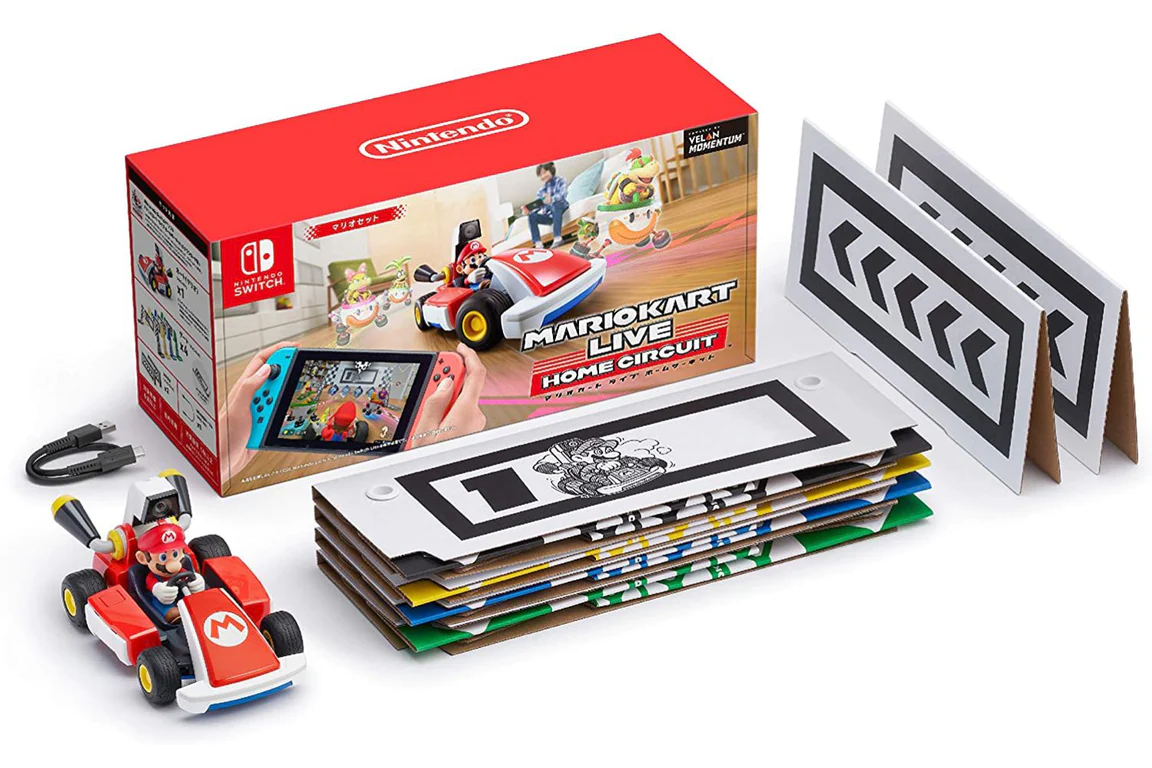13. Applications and implications¶
This week Checklist¶
About my final project¶
- [✓] what will it do?
- [✓] who has done what beforehand?
- [✓] What will you design?
- [✓] what materials and components will be used?
- [✓] where will they come from?
- [✓] how much will they cost?
- [✓] I what parts and systems will be made?
- [✓] what processes will be used?
- [✓] what questions need to be answered?
- [✓] how will it be evaluated?
What will it do?¶
I wanted to design a remote kart system that allows players experience mario-kart in real world.
I set the following conditions for the robot
- It’s easy to assembly by a middle school level student
- All parts are 3D printable excepts metal and electronic parts
- Can trigger speed boost and traps when move over the function tags
- Self design and produce control boards
- Compatible with Arduino IDE
- Has a easy to understand assemble instruction
- Low cost
Who has done what beforehand?¶
 Nintendo had a product that’s very close to my final project design. It’s a remote car that can connect to the Nintendo Switch and the screen will show image from the car. However, it’s not able to trigger speed boost via tags. Actually, as my knowledge, I might the first one to do this.
Nintendo had a product that’s very close to my final project design. It’s a remote car that can connect to the Nintendo Switch and the screen will show image from the car. However, it’s not able to trigger speed boost via tags. Actually, as my knowledge, I might the first one to do this.
What will you design?¶
The designs that will be included in this project are
- Speed boost RFID card design (CorelDRAW)
- Poster design (CorelDRAW)
- 3D printed parts (Fusion 360)
- ESP32 control board PCB (Fusion 360)
- Programming (Arduino IDE)
- Published on Internet as open source project
What materials and components will be used? Where will they come from? How much will they cost?¶
The electronic and metal parts are mostly purchased form Taobao, a famous e-shop platform in China. The kart body are 3D printed.
| Item | Quantity | Source | Costs (USD) |
|---|---|---|---|
| PLA Filament | 1kg | Taobao | $8 |
| CP2102 micro USB to serial | 1 | Taobao | $2 |
| MG90d | 1 | Taobao | $2 |
| Dupont FF cable 20cm | 8 | Taobao | $1 |
| M2 x 8mm screws | 10 | Tabobao | $1 |
| 180 DC Motor | 1 | Tabobao | $1 |
| 3*80mm Stainless Steel Rod | 1 | Tabobao | $1 |
| 16340 Li-ion Batteries | 2 | Taobao | $3 |
| F623ZZ(3104) Bearings | 4 | FabLab iSpace | $1.5 |
| ESP32 WROOM-32 | 1 | FabLab iSpace | $2 |
| IC 3.3V | 1 | FabLab iSpace | $0.1 |
| 0Ω resistor | 1 | FabLab iSpace | $0.1 |
| 220Ω resistor | 1 | FabLab iSpace | $0.1 |
| 10kΩ resistor | 1 | FabLab iSpace | $0.1 |
| 10uF capacitor | 2 | FabLab iSpace | $0.2 |
| Greed LED 1206 | 1 | FabLab iSpace | $0.1 |
| Switch 1206 | 1 | FabLab iSpace | $0.1 |
| 6mm push switch | 1 | FabLab iSpace | $0.1 |
| 1x40 Header | 4 | FabLab iSpace | $0.1 |
Total costs of my project is USD$23.5
what parts and systems will be made? What processes will be used?¶
Mechanical system of my project
- The pattern on the speed boost tag will cut by Vinyl Cutter - Brother ScanNCut CM550.
- The main body and the gear box are designed in Fusion 360 and 3D printed by Raise N2 Plus 3D printer.
Electrical system of my project
- The main control board’s PCB will be milled in CNC machine - Roland Modela Pro MDX-500
Text and open source archives
- All project files will be upload to gitlab repository and have version control
What questions need to be answered?¶
- Can the remote control latency as low as user experience in Mario Kart?
- Can the speed boost function triggered when the kart moving in high speed?
How will it be evaluated?¶
- Check to see if the 3D printed gear box works.
- Check to see whether the kart can be remote control by a PS3 controller.
- Check to see if the speed boost can be trigger in normal speed.
Last update:
June 28, 2022